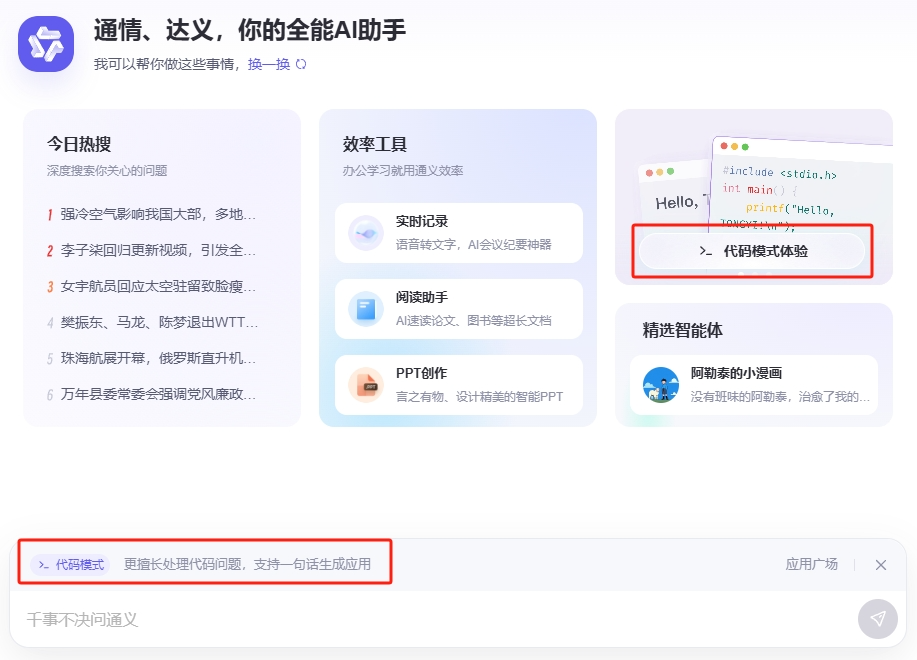Did you ever dream of owning a magic brush like Ma Liang as a child, able to create anything with just a few strokes? Fortunately, with the rapid development of AI technology, tools like Midjourney, Stable Diffusion, and DALL-E3 have become popular, making us the possessors of such a ‘magic brush’. However, Midjourney is expensive and complex to use; Stable Diffusion is free but demands high-performance graphics cards and high computer settings; DALL-E3 has a lower barrier to entry but performs less comprehensively than Midjourney and generates images of a fixed size that cannot be adjusted. Thus, these three AI tools are not user-friendly for most of us.
Fortunately, domestic AI art tools in China are also competitive, such as Dreamina, launched by ByteDance’s Jianying, which is free (currently free), easy to operate, and has no barriers to entry. However, its performance is not stable and relies heavily on prompt words, so I have specially compiled a guide for Dreamina AI art, sharing it with everyone.
Let’s not even mention Dreamina General v1.1 and Dreamina Anime v1.1. Although I deliberately tested them with a poem, from the results, we can clearly see that with the same prompt words but different models, the gap is huge. So, only the right prompt words paired with the right model can generate the right pictures.
To help everyone understand the characteristics of each model, I have briefly organized the following: Model: Dreamina General v1.2 Official Introduction: Optimized Chinese elements, realistic scenes, and photography directions. Interpretation by Qinghao: Suitable for generating pictures of characters or scenes from a photographic perspective, with a strong sense of realism, and in a realistic or classical style. Model: Dreamina Stylized XL Official Introduction: Optimized the ability of non-realistic styles and understands artistic styles. Putting short sentences at the front is more effective. Interpretation by Qinghao: If you want pictures with a sense of design, visual impact, or artistic expressiveness, you can choose it. It is suitable for generating surrealist pictures. Model: Dreamina General XL Official Introduction: Enhanced the image generation effect and professional control ability. It is recommended to use tag-style prompt words. Interpretation by Qinghao: Compared with Stylized XL, the General XL model is more suitable for friends who need a sense of reality and naturalness. The pictures it generates are closer to real life than those of Stylized XL. Model: Dreamina General v1.1 Official Introduction: A basic self-developed image generation model. Interpretation by Qinghao: It is the version before Dreamina General v1.2. As the saying goes, the pupil outdoes the master. So, we can just use Dreamina General v1.2 directly. Model: Dreamina Anime v1.1 Official Introduction: Optimized Japanese manga and illustration styles. Interpretation by Qinghao: Choose it if you want to generate pictures in styles such as anime, comics, illustrations, and cartoons. After understanding the characteristics of each model, it’s time to practice with prompt words. Make good use of “style tag-style” prompt words Each picture has different styles and genres behind it. Therefore, if we want to get pictures that better match our ideas and inspirations, we need to learn to use this kind of “style tag-style” prompt words to guide the Dreamina model to generate pictures with similar artistic styles. For example, if I want a picture rich in classical elements, when I don’t use any style description, the picture I get is like this. Prompt words: Ancient courtyard, trees, happy moon and blooming flowers Model: Dreamina Stylized XL Obviously, this picture looks ordinary and has no highlights.Don’t rush to discard the image; instead, we’ve added a ‘style tag’ prompt to salvage it. Prompt: Ancient courtyard, trees, blooming flowers under a full moon, paper-cut style model: Dreamina Stylized XL. It can be observed that without altering other prompts, simply by adding a description of style, we’ve obtained an image with a more classical ambiance, with immediate effects. Perhaps some may say, I don’t understand what image styles and genres are, nor do I know what type of image I want.
How can this be resolved? This issue is also easily addressed because the ‘style tag’ prompts we mention do not strictly require us to adhere to professional jargon in painting or photography; they are merely descriptive terms to help AI comprehend artistic styles. Therefore, when we are unsure of the specific style, we can also describe the style by adding the names of famous painters, photographers, calligraphers, or designers. For example, if I want to obtain an illustration of rural scenery, I can change the image style by adding different master names. Prompts: Endless green fields, rapeseed flowers, countryside, low houses, green trees beside the houses, light blue sky, huge white clouds, Hayao Miyazaki style model: Dreamina Anime v1.1 Prompts: Endless green fields, rapeseed flowers, countryside, low houses, green trees beside the houses, light blue sky, huge white clouds, Van Gogh style model: Dreamina Anime v1. 1. It has been proven that master names are indeed very effective ‘style tag’ prompts. Similarly, we can also adjust the image style by using the names of famous paintings. For instance, when we want to obtain a landscape painting in the style of ancient paintings, we can use ‘A Thousand Miles of Rivers and Mountains’ as a prompt. Prompts: Green mountains and clear waters, traditional Chinese painting, A Thousand Miles of Rivers and Mountains model: Dreamina Universal v1. 2. Similar to ‘A Thousand Miles of Rivers and Mountains’ in terms of ‘style tag’ prompts, there are ‘Along the River During the Qingming Festival’, ‘Dwelling in the Fuchun Mountains’, ‘Ukiyo-e’, etc., all of which are very suitable for generating magnificent landscape paintings and distant views of ancient agricultural society. However, style images obtained through ‘master names’ or ‘names of famous paintings’ are not commonly used in commercial promotion. If we want to obtain images that can be used as commercial posters, we still need to use more fashionable and trendy ‘style tag’ prompts. For example, in the promotion of children’s products, we can use this kind of three-dimensional style that is different from the flat style of anime, such as ‘miniature model’, ‘C4D style’, etc.Prompts: A huge toy car, forest, lawn, cute, dopamine color scheme, miniature model
Model: Dreamina General XL Prompts: Children’s building blocks, forest, lawn, cute, dopamine color scheme, C4D style Model: Dreamina General XL As we can see, the prompts I used are very simple, without even spending much thought on design. However, with the buff of stacking “style label” prompts, the final effect of the pictures is quite good. However, we also need to note that different “style label” prompts have a great impact on the overall design of the picture. They are almost the core of a picture. When choosing “style label” prompts, we should also pay attention to matching the corresponding emotional atmosphere and picture scene. To enable everyone to generate the pictures they want with one click, I have sorted out 17 common “style label” prompts and applicable scenarios. You can use them freely. Simple and useful prompt formula After browsing thousands of pictures generated by netizens with Dreamina, Qinghao summarized a set of prompt formulas. Although the formula may not be perfect, it can basically handle most scenarios. Moreover, the applicable scope of this formula is not limited to Dreamina. It is very practical for all text-to-image AI tools on the market currently. prompt = style label + central content + environmental scene + graphic element + color requirement + emotional atmosphere + technical requirement + perspective requirement The elements involved in the formula are not indispensable. The richer the details we provide, the closer the generated picture will be to our expectations. Of course, we can also reduce the description of details to give the AI more room for free play. Regarding each element in the formula, you can understand it as follows: 1. Style label: This is the “style label” prompt we repeatedly mentioned above. 2. Central content: The “protagonist” of the whole picture. Everyone else can be missing, but it cannot be missing. 3. Environmental scene: Describes the environment or background where the “protagonist” of the picture is located, such as “beach sunset”, “future city”, “morning forest”, “abandoned ruins”, etc. 4. Graphic element: Elements that must be included in the picture besides the “protagonist”, usually playing the role of setting the atmosphere or supplementing the environment, such as “colorful balloons”, “flowers”, “marble texture”, etc. 5. Color requirement: The key element that determines the main color tone of the picture. We can describe specific colors or specific color schemes, such as Morandi color scheme, dopamine color scheme, etc.6. Emotional Atmosphere: The mood or atmosphere we wish the image to convey, such as ‘happiness,’ ‘mystery,’ ‘serenity,’ etc.
7. Technical Requirements: The deeper technical effects we desire, including the texture of the image, resolution, format, or specific visual effects requirements, such as ‘high contrast,’ ‘blurred background,’ ‘motion blur,’ etc. 8. Perspective Requirements: Restrictions on the layout and composition of the image, including close-ups, long shots, symmetry, focal points, bird’s-eye views, front views, etc. Now, let’s briefly practice using these prompt formulas to generate a rough draft of a chocolate commercial poster. Additionally, to make it easy for everyone to see the corresponding content of each element at a glance, I have specifically underlined and annotated with parentheses. Note that there are no parentheses in the actual input of prompt words. Prompt words: C4D style, miniature model, surrealism (style tags), chocolate island (central content), trees, ocean, small figures eating chocolate (graphic elements), solid color simple background (environmental scene), dopamine color scheme, low saturation (color requirements), warm and soft, comfortable atmosphere (emotional atmosphere), studio lighting, real studio shooting, lighting rendering, product shooting (technical requirements), macro photography, isometric perspective (perspective requirements). Model: Dreamina Universal XL. These images are all generated by this set of prompt words, and the results are quite satisfactory. Basically, only adding some product names and highlight texts is needed to directly release the original image! It perfectly grasps the needs of non-design professionals like me, who are clueless about drawing. Similarly, for designers who need to produce a large number of images daily, directly applying prompt formulas can also make their images more stable. Not only can they quickly gain inspiration and ideas, but sometimes they can even directly obtain a ‘finished image’ with more than 90% completion, saving a lot of time. Since you have reached the end of the article, you are ready to go! Try AI drawing with this set of prompt formulas. Additionally, apart from Dreamina, which other AI art tools do you think are also good? You can leave a comment to tell us. Although the demonstration images in the article are very beautiful, at the beginning, when I had not yet fully mastered the prompt word strategy, the images generated by Dreamina were actually like this… Prompt words (sunny counterexample): Ancient painting, Jiangnan water town, the protagonist of the painting is a white ancient costume woman, holding a rice paper umbrella walking on an arched bridge, with willows and scattered house models in the background. Model: Dreamina Universal v1.It’s really hard to comment… It can be seen that sometimes it’s not that AI is not good, but that we are not proficient enough. Each AI tool has its own logical thinking. Therefore, when we get an AI tool but find it not easy to use, don’t rush to give up. We can be a bit more patient to explore and try. Then, we will find that after finding the correct way to use the AI tool, it is really great to use. Dreamina website: https://dreamina.jianying.com/ai-tool/home



